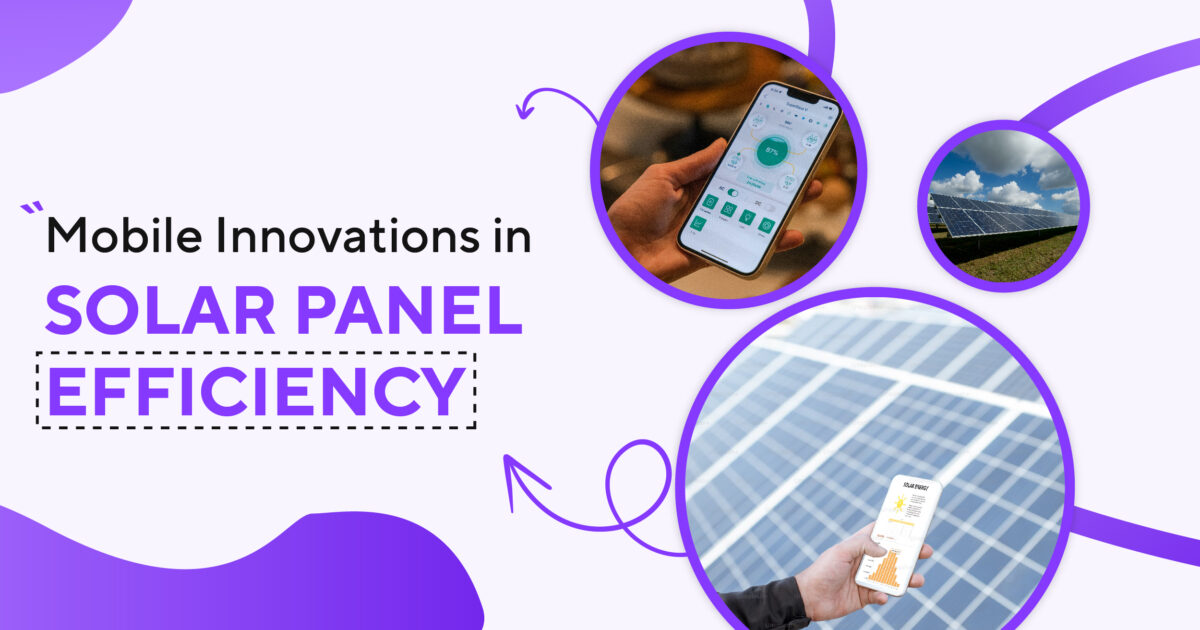Mobile Innovations in Solar Panel Efficiency
Mobile solar technology is gaining pace in today’s energy industry, owing to an increased need for sustainable and portable energy solutions. As the world moves toward renewable energy, mobile solar panels provide a versatile and ecologically friendly alternative to traditional power sources, particularly in rural and off-grid places. Recent advances in solar panel efficiency, portability, and flexibility have increased the number of applications, ranging from portable chargers for electronic devices to solar-powered vehicles. Thin-film solar cells and wearable solar devices are changing the way consumers and companies think about and utilize solar energy on the go. These technologies not only encourage greater energy independence, but also contribute significantly to the global effort to reduce carbon footprints and combat climate change.
Evolution of Solar Panel Technology
Solar panel technology has improved substantially since its inception. The first working photovoltaic (PV) cell was invented in 1954 at Bell Laboratories in the United States, marking the beginning of solar energy commercialization. Because of their high cost and low efficiency, solar cells were first used largely in space applications, powering spacecraft in Earth orbit.
Throughout the 1970s and 1980s, advances in production processes and materials led to a gradual decrease in costs and an improvement in solar panel efficiency. Polycrystalline silicon cells were introduced about this period, offering a less costly alternative to preceding monocrystalline cells, but with somewhat lower efficiency.
The turn of the century brought significant technological advancements. Multi-junction solar cells, which can absorb a wide range of light wavelengths, are significantly more efficient. Recent advances in thin-film solar technology and the application of nanotechnology have pushed the frontier even farther, enabling the production of lightweight, flexible solar panels with high efficiency. These findings paved the way for contemporary mobile solar technologies.
Key Innovations for Increased Efficiency
Recent advancements in solar panel design and materials have significantly increased the efficiency and functionality of mobile solar technology. One of the most notable advancements was the development of perovskite solar cells. These cells make use of a hybrid organic-inorganic lead or tin halide material, which may be manufactured using fewer sophisticated techniques than ordinary silicon cells. Perovskites have outstanding light absorption and charge transport capabilities, leading to significant gains in solar conversion efficiencies of more than 25% under laboratory circumstances.
Another important advancement is the use of bifacial solar panels, which capture light from both sides. This design increases energy output by up to 30% above traditional monofacial panels, especially in transportable installations where light may bounce off neighboring objects.
Furthermore, the development of transparent photovoltaic (PV) glass revolutionized mobile solar applications. This technology can function as both a structural component and a power generator, making it ideal for use in mobile gadgets and electric vehicles. translucent solar panels have a translucent appearance, allowing for seamless integration with windows and screens while maintaining aesthetics and functionality.
Finally, developments in nano-coating technology have improved solar panel efficiency by increasing light absorption while reducing reflecting losses. These coatings are especially important for mobile solar panels because they assist to sustain peak output under changing lighting conditions, allowing for consistent power generation even under less-than-ideal situations. Together, these advancements are lifting the bar for what mobile solar technology is capable of, ushering in a future in which portable renewable energy is both inexpensive and effective.
Case Studies: Successful Mobile Solar Implementation
Mobile solar technology has found several applications in a variety of sectors, demonstrating its versatility and value. One well-known example is the employment of portable solar power stations in disaster relief efforts. These stations provide crucial electricity to areas affected by natural disasters where traditional power infrastructure is damaged or non-existent. For example, after Hurricane Maria in 2017, portable solar systems were used in Puerto Rico to power medical equipment and communication devices, which were vital during disaster relief efforts.
Solar-powered backpacks are gaining popularity among outdoor enthusiasts and travelers. These backpacks have flexible solar panels that power portable devices such as cameras and GPS systems, ensuring communication and safety during remote operations. Companies such as Voltaic Systems have been at the forefront of this invention, producing backpacks equipped with high-efficiency solar cells capable of charging cell phones and other portable electronics in hours.
Another key application is in the transportation industry, particularly with solar-powered cars. Universities and business companies have created automobiles that run only on solar energy and participate in events such as the World Solar Challenge. These cars employ cutting-edge lightweight, high-efficiency solar panels and aerodynamic designs to maximize energy absorption while reducing consumption.
Finally, the inclusion of solar technology into everyday consumer products has risen dramatically. Installing solar-powered charging stations in public spaces like parks and street corners, for example, enables individuals to recharge their gadgets while on the go while simultaneously utilizing sustainable energy. These installations not only provide convenience, but they also encourage people to use renewable energy.
Challenges and Restrictions
Despite significant developments, broad use of high-efficiency mobile solar panels faces many challenges. One significant barrier is cost; while prices have decreased over time, high-efficiency solar technologies remain more expensive than traditional options, limiting their availability to average customers and small-scale applications. Another concern is durability. Mobile solar panels must be able to withstand a wide range of external circumstances, including extreme temperatures and physical impacts, which might compromise its long-term performance and reliability.
Furthermore, solar panel efficiency drops dramatically in low-light conditions, such as overcast days or heavily gloomy areas. This unpredictability may be especially problematic for mobile applications that require consistent power output. Finally, there are aesthetic and practical issues, especially in consumer gadgets and automobiles, where adding solar panels without losing beauty or utility poses ongoing technological and design hurdles. These barriers combine to impede the uptake of mobile solar systems in major economies.
Future Trends in Mobile Solar Technology
The future of mobile solar technology seems promising, with a slew of interesting technologies ready to boost efficiency and accessibility. Experts expect a big shift toward embedding solar energy into ordinary products, fueled by developments in thin-film solar panels. These panels are not only lighter and more flexible, but they can also be readily integrated into the fabric of clothing, portable gadgets, and even automobile exteriors, pointing to a future in which solar power is ubiquitous and easily available.
Another expected trend is the development of energy storage technology. As battery technology progresses, mobile solar devices will be able to store more energy more effectively, boosting solar power reliability and allowing for device use in a variety of settings, both day and night. This innovation will be especially advantageous in mobile applications where regular energy availability is required.
Artificial intelligence is also likely to have a significant impact on solar panel efficiency. AI can boost energy absorption by predicting sun patterns and altering panel orientations as necessary, leading in higher overall efficiency. Furthermore, current materials science research is expected to provide new types of solar absorptive materials that may outperform the efficiency restrictions of today’s silicon-based cells, redefining solar power’s role in mobile and wearable technologies. These improvements indicate a dynamic area that is growing toward smarter, more integrated solar energy systems.




